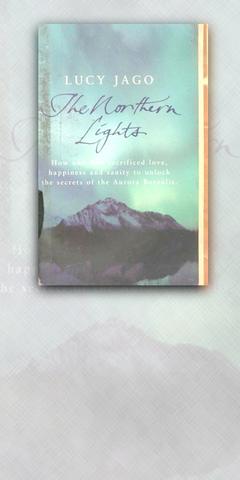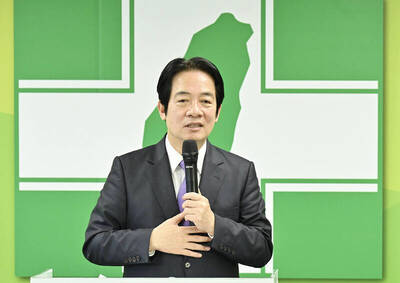In 208BC the following was entered in Chinese records: "During the night luminous clouds were seen, gold and white, with long streamers, which lit up the hills. Some think it is Heaven's Sword, but others think it is a deep hole, with a large blazing fire in the sky." On Sept. 2, 1919, a large Swedish steamship, the Peking, sent a radio distress message from the ocean north of Korea. It had set out three days earlier from southern Japan, bound for England, but had been blown far off course by a violent storm. It was never heard from again and was officially listed as lost with all hands.
The connection between these two events is that the Chinese report is the earliest known written description of the Aurora Borealis, or Northern Lights, and the steamship Peking was carrying in its cargo the final treatise of Kristian Birkeland, the Norwegian professor who was the first person to discover the real cause of the Lights, one of the earth's most extraordinary natural spectacles. He had died in Tokyo two years earlier at 49.

Lucy Jago's The Northern Lights is a fantastic book, and it tells a magnificent tale. It begins on the northernmost tip of Norway, far within the Arctic Circle,with the ascent of a modest mountain, no higher than the hills of Taipei's Yangmingshan (
The ethereal display, visible near each pole, appears like a translucent curtain, green and yellow, totally silent, flickering and shooting across the sky. Birkeland's team never grew accustomed to the phenomenon's beauty, while the local Lapps saw it as a bad omen and Icelanders believed it represented the spirits of the unhappy dead.
Every 50 to 100 years the phenmenon is seen as far south as Rome, where it appeared blood red in 1898. All that was known for certain was that its appearance disrupted compass readings. Birkeland's expedition was financed because of the believed possibility that an understanding of the Lights would help improve weather forecasting.
On his mountaintop, Birkeland set up sensitive magnetometers powered by kerosene and clockwork in his two-roomed hut. These recorded the strength and direction of the earth's magnetic field, and readings from them were taken photographically. Other aspects of the expedition were primtive indeed. The men's diet was almost exclusively reindeer meat, and water froze two feet away from the stove.
As a result of this first expedition (in the course of which two men died in an avalanche), Birkeland concluded that the phenomenon was produced by negatively charged particles from the sun reaching the earth. Once here, they encountered the earth's magnetic field, followed its pull to the poles, and there collided with atoms in the atmosphere resulting in the Northern (and Southern) Lights.
No scientist before this had believed charged particles could travel such vast distances. Space, it was held, was empty. And for 50 years orthodox opinion refused to accept Birkeland's theory. But then, in 1962, instruments on board NASA's Mariner II spacecraft, on its way to Venus, recorded the presence in space of electrified gases. Soon the existence of `Solar Wind' was acknowledged, thinner, hotter and faster than any wind on earth and containing just the charged particles that Birkeland had postulated.
We now know that the earth's magnetic field is strongly deformed by its interaction with this wind, and is stretched out like a comet's tail on the earth's dark, night side to 10 times the moon's distance or more, then explosively collapses back every few hours, creating the dancing displays of light at the two poles. Nevertheless, Birkeland is today acknowledged as the first scientist to have proposed an essentially correct hypothesis to explain the Aurora Borealis.
Birkeland's was, in many ways, Norway's golden age. The country was still effectively a vassal-state of Sweden, and would remain so until 1921. But several figures were becoming famous on the world stage -- Ibsen in drama, Grieg in music, Munch in painting, and Nansen in polar exploration (though the North Pole had still never been visited). Kristian Birkeland wanted to join them in the field of geophysics.
For several reasons, Birkeland's life was not an unqualified success story. He became convinced that he needed to make money, if only to finance further expeditions of Arctic research.
First, he gave his attention to the manufacture of a prototype for an electromagnetic cannon capable of propelling shells 220km. In the run-up to World War I, the English, the Germans and the French were all intensely interested in this possibility, but to this day no armed force has ever adopted it.
Second, he expended immense energy on an idea for producing fertilizer from the nitrogen in the air. By means of an electrical process, this nitrogen could be, and was, extracted, but never quite in sufficient qualtities for the process to be commercially viable. But Norway, with its innumerable waterfalls, was in the forefront of the development of hydro-electric power, and, until his death, Birkeland was encouraged and financed by what was then, and remains, Norway's biggest company, Norsk Hydro.
Despite his setbacks, Birkeland pioneered major advances. He successfully constructed a vacuum-filled chamber in which he re-created in miniature, with their electromagnetic causes, phenomena such as the rings of Saturn and the Northern Lights themselves. He also spent much time in Egypt researching another celestial phenomenon, that of Zodiacal Light. This is a faint, tilted cone of light that appears in the west an hour after sunset and in the east an hour before sunrise. It's best observed in totally dark conditions where the air is dry and clear. Egypt fitted the bill perfectly.
Indeed, the reason why Birkeland died in distant Tokyo was in part because he was traveling back to Norway from Egypt via Japan, as an interesting way home in the hazardous European conditions prevailing during the latter days of World War I.
This is a fabulous book. It's hard to know which are the more impressive -- the natural wonders such as herds of reindeer swimming in the sea, their antlers appearing like a floating forest, or the human story, with Kristian Birkeland standing robed among the pyramids like a high priest of ancient times.

May 11 to May 18 The original Taichung Railway Station was long thought to have been completely razed. Opening on May 15, 1905, the one-story wooden structure soon outgrew its purpose and was replaced in 1917 by a grandiose, Western-style station. During construction on the third-generation station in 2017, workers discovered the service pit for the original station’s locomotive depot. A year later, a small wooden building on site was determined by historians to be the first stationmaster’s office, built around 1908. With these findings, the Taichung Railway Station Cultural Park now boasts that it has

The latest Formosa poll released at the end of last month shows confidence in President William Lai (賴清德) plunged 8.1 percent, while satisfaction with the Lai administration fared worse with a drop of 8.5 percent. Those lacking confidence in Lai jumped by 6 percent and dissatisfaction in his administration spiked up 6.7 percent. Confidence in Lai is still strong at 48.6 percent, compared to 43 percent lacking confidence — but this is his worst result overall since he took office. For the first time, dissatisfaction with his administration surpassed satisfaction, 47.3 to 47.1 percent. Though statistically a tie, for most

As Donald Trump’s executive order in March led to the shuttering of Voice of America (VOA) — the global broadcaster whose roots date back to the fight against Nazi propaganda — he quickly attracted support from figures not used to aligning themselves with any US administration. Trump had ordered the US Agency for Global Media, the federal agency that funds VOA and other groups promoting independent journalism overseas, to be “eliminated to the maximum extent consistent with applicable law.” The decision suddenly halted programming in 49 languages to more than 425 million people. In Moscow, Margarita Simonyan, the hardline editor-in-chief of the

Six weeks before I embarked on a research mission in Kyoto, I was sitting alone at a bar counter in Melbourne. Next to me, a woman was bragging loudly to a friend: She, too, was heading to Kyoto, I quickly discerned. Except her trip was in four months. And she’d just pulled an all-nighter booking restaurant reservations. As I snooped on the conversation, I broke out in a sweat, panicking because I’d yet to secure a single table. Then I remembered: Eating well in Japan is absolutely not something to lose sleep over. It’s true that the best-known institutions book up faster